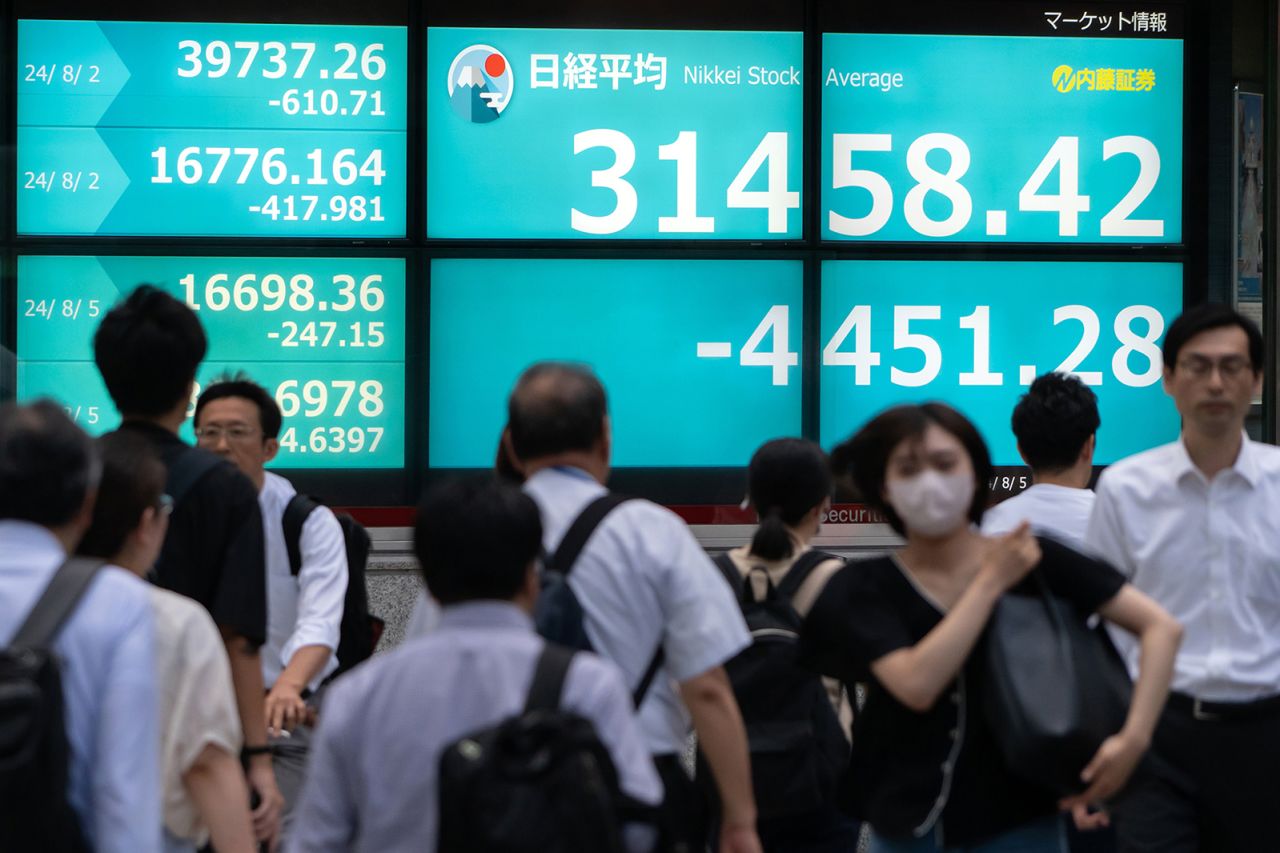


Stocks ended a turbulent trading session on a dour note as investors feared that the US economy is on shaky legs.
The Dow plunged 1,034 points, or 2.6%. The S&P 500 dived 3% and the Nasdaq Composite slid 3.4%.
The blue-chip Dow and benchmark S&P 500 index notched their biggest daily percentage loss since 2022, when the Federal Reserve’s aggressive rate-hiking cycle helped send the S&P 500 into a bear market.
Monday marks just the 15th time the Dow has shed more than 1,000 points in a single session, according to FactSet data.
Also on Monday, Japanese stocks suffered their biggest daily losses since 1987 as fears about a US economic slowdown sent shock waves through global markets.

Oil prices fell. West Texas Intermediate crude futures, the US benchmark, settled at $72.94 a barrel. Brent crude futures, the international benchmark, settled at $76.30 a barrel.
Downdetector reported that popular online trading platforms including Fidelity, E-Trade and Robinhood ran into technical difficulties Monday as investors rushed to shed stocks.
The US market’s losses on Monday extend the market’s steep selloff on Friday, after a dreary July jobs report rattled Wall Street.
Traders see a 85% expectation that the Fed will cut rates by half a point the next time it reconvenes, in September, according to the CME FedWatch Tool.
Some experts, including famed Wharton professor emeritus of finance Jeremy Siegel, have called for the Fed to call an emergency meeting to cut rates before then. The central bank last took such action in March 2020, at the onset of the Covid pandemic.
Still, other economists and investors have argued that the market is overreacting to recent economic data, with some even recommending Monday’s carnage as a buying opportunity.
“Evidence certainly points to a slowing economy. But slowing and slow are two very different points,” Jack Janasiewicz, lead portfolio strategist at Natixis Investment Managers, wrote in a Friday note. “Lower prices certainly can have a massive psychological effect. But investors need to step back and look at the fundamental story, which still remains decent.”
As stocks settle after the trading day, levels might change slightly.